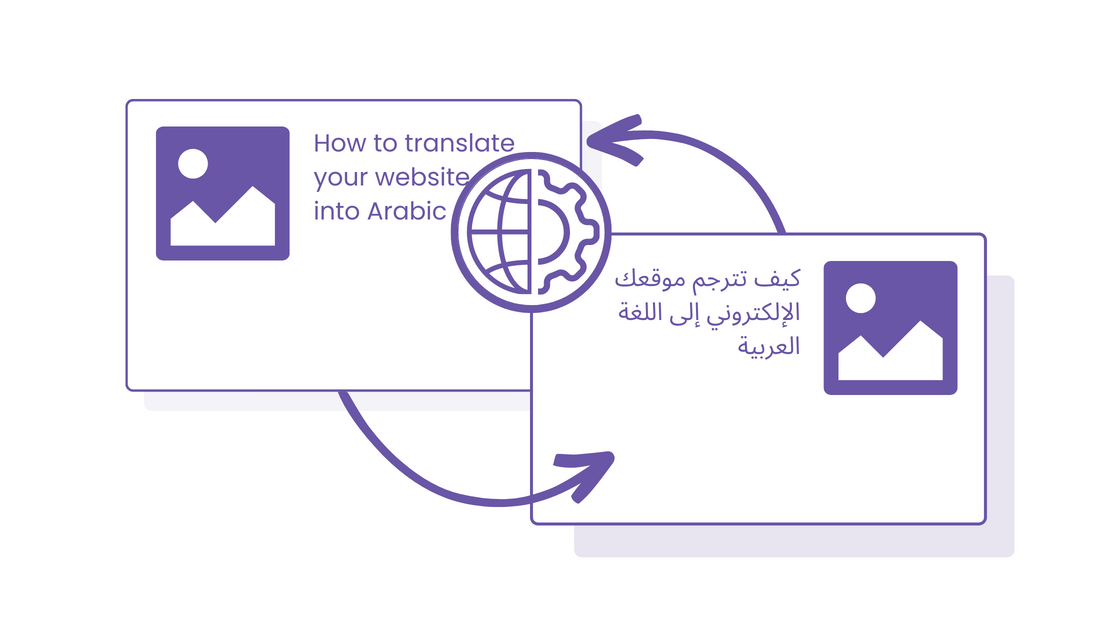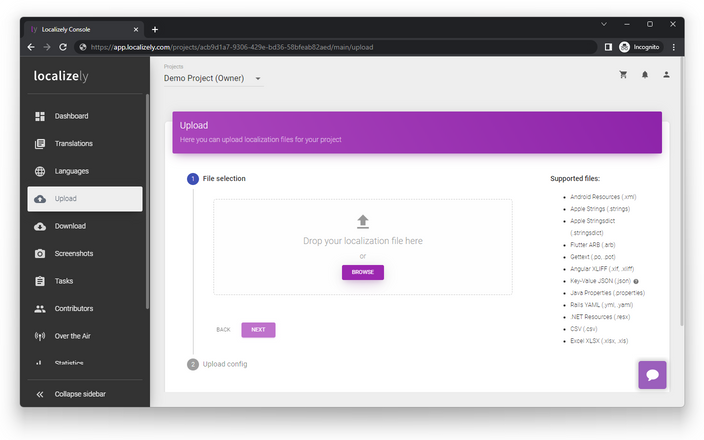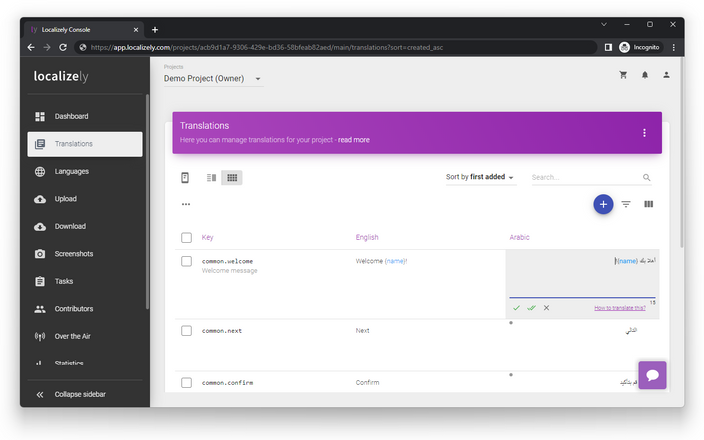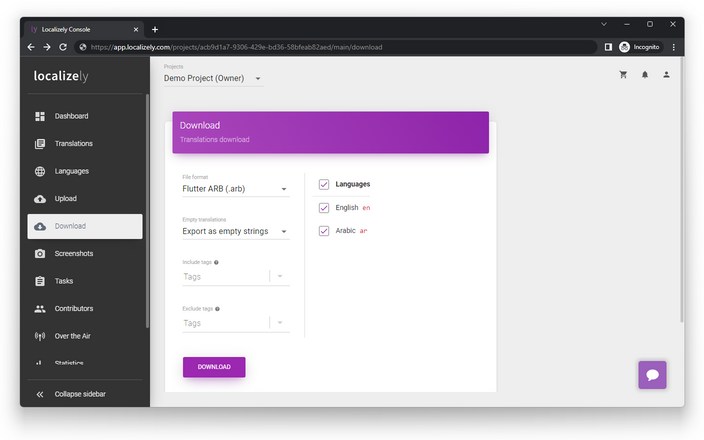How to translate your website into Arabic

Ready to tap into new, prosperous markets with your business? Embarking on this venture may seem daunting, but a great starting point is tailoring your website to resonate with these new audiences. After all, speaking the language of your potential customers can break barriers like nothing else.
The Middle East and North Africa regions are booming business areas that global leaders like Apple, Tesla, Microsoft, and Toyota have already tapped into – a clear sign that these markets are brimming with potential.
The key to unlocking these markets? Translating your website into Arabic, the lingua franca of these regions. In this blog post, we'll guide you through the process of translating your website into Arabic, thereby making your products and services accessible to users from these emerging markets.
Why translate your website into Arabic?
In the age of globalization, accessibility matters more than ever before. Translating your website into Arabic can open a gateway to vast opportunities, and here's why:
-
Expanding audience reach: Arabic is considered among the top 10 most spoken languages globally, with estimates suggesting it's spoken by more than 250 million people. By translating your website into Arabic, you potentially reach this broad and diverse audience, expanding your brand recognition and influence across multiple markets.
-
Economic opportunities: Several Arabic-speaking nations, like the United Arab Emirates and Saudi Arabia, have thriving economies and high consumer purchasing power. Making your website accessible in Arabic could translate into significant business growth.
-
Cultural inclusivity: A multilingual website demonstrates respect for different cultures. Providing content in Arabic can enhance the user experience for Arabic speakers, making them feel valued and respected.
-
Increased engagement: Users are more likely to engage with a website presented in their native language, leading to increased time spent on the site, higher conversion rates, and ultimately, more loyal customers.
-
Competitive edge: Despite the wide use of Arabic, it remains underrepresented on the internet relative to its number of speakers. This presents a unique opportunity to get ahead of competitors and stand out in the marketplace.
-
SEO advantages: With the right SEO strategy, an Arabic version of your site can rank high on search engines in Arabic-speaking countries, driving more organic traffic to your website.
Crucial points to consider when translating your website to Arabic
Let's look at some important factors related to entering new markets, especially those that require adapting your website to the Arabic language. Here's a quick guide:
-
Right-to-Left adaptation: Arabic is a Right-to-Left (RTL) language, meaning it is written and read from right to left. This necessitates a shift in your website layout to accommodate RTL text direction, including alignment of text, images, buttons, forms, and navigation elements.
-
Start with Standard Arabic: Starting with Standard Arabic is a good initial approach when translating your website. It is widely understood across all Arabic-speaking regions, thus allowing you to reach a broad audience.
-
Regional variations: While Standard Arabic is a good starting point, it's essential to understand that Arabic has many regional variations. Localizing your content for specific countries or regions can further enhance the user experience and increase engagement.
-
Monitor traffic and analytics: Track the performance of your localized pages by analyzing metrics such as bounce rate, session duration, conversion rate, and more. This data can provide insights into how well your content is performing and highlight areas for improvement.
-
Ask for feedback from users: Providing mechanisms for users to give feedback is crucial in understanding their needs and preferences. Encourage user interactions to learn more about what works and what doesn't in your localized content.
-
Continuous improvement: Remember that localization is an ongoing process. Use data and feedback to make continual adjustments and improvements, making your website more appealing and accessible to your Arabic-speaking audience. This will help in creating a more personalized and enjoyable user experience, increasing your chances of success in the new market.
How to translate your website into Arabic with Localizely
Translating your website into Arabic with the Localizely platform is quite simple. In simple terms, the process includes uploading your localization files to Localizely, translating your messages into Arabic, and then downloading and re-integrating these files back into your project. The upcoming sections will provide a more detailed walk-through of these steps.
Upload localization files
You can easily upload your localization files on the Upload page. Simply drag and drop your file into the marked place, and hit the 'Upload' button.

Translate the website into Arabic
Once your localization files are uploaded, proceed to the Translations page to start translating your localization messages into Arabic. Choose the translation method that fits your needs best: self-translation, using Machine Translation, delegating to your team, or hiring expert translators.

Download localization files
Once your website's content has been translated into Arabic, go to the Download page. From this location, you can download the localization files your development team needs to embed into your project.

Conclusion
This article provides a brief introduction to the promising prospects within Arabic-speaking markets. By undertaking minimal steps such as translating your website into Arabic, you can penetrate these markets. We've only touched the surface in this article, but remember, understanding and addressing your customers' needs is a pathway to success.
When it comes to translation and localization, Localizely can help you with that. It's an intuitive platform packed with a wide range of features designed to ease software localization. Furthermore, it offers a free plan that is perfect for smaller projects and is completely free for open-source projects - no credit card required.
Like this article? Share it!
Aleksa is a Software Engineer at Localizely. Over the past few years, Aleksa has been working in the field of software localization. In his free time, he enjoys playing guitar and writing tech posts.
Enjoying the read?
Subscribe to the Localizely blog newsletter for quality product content in your inbox.
Related
Resources
- What is Localizely?
- Getting started
- Localization workflow
- Translation editor
- Flutter Over-the-Air updates
- Flutter In-Context Editing
- Project branching
- Professional translation services
- Machine translation
- Translation Memory
- Glossary
- Reports and statistics
- Figma integration
- AWS S3 integration
- GitHub integration
- GitLab integration
- Bitbucket integration
- CLI
- Configuration file
- Supported file formats
- Language & Country Codes
- Referral Program
- I18N Questions
- FAQ